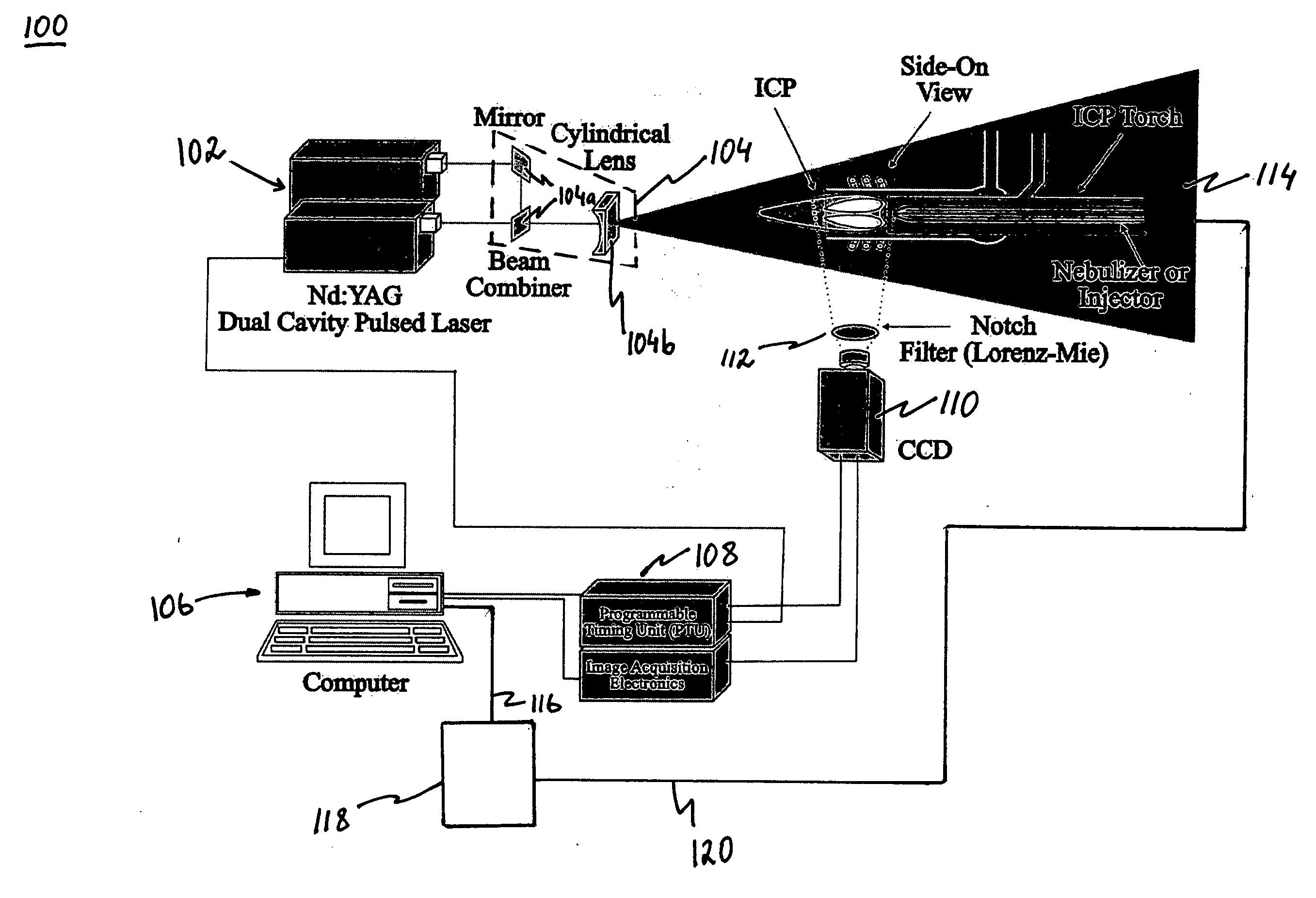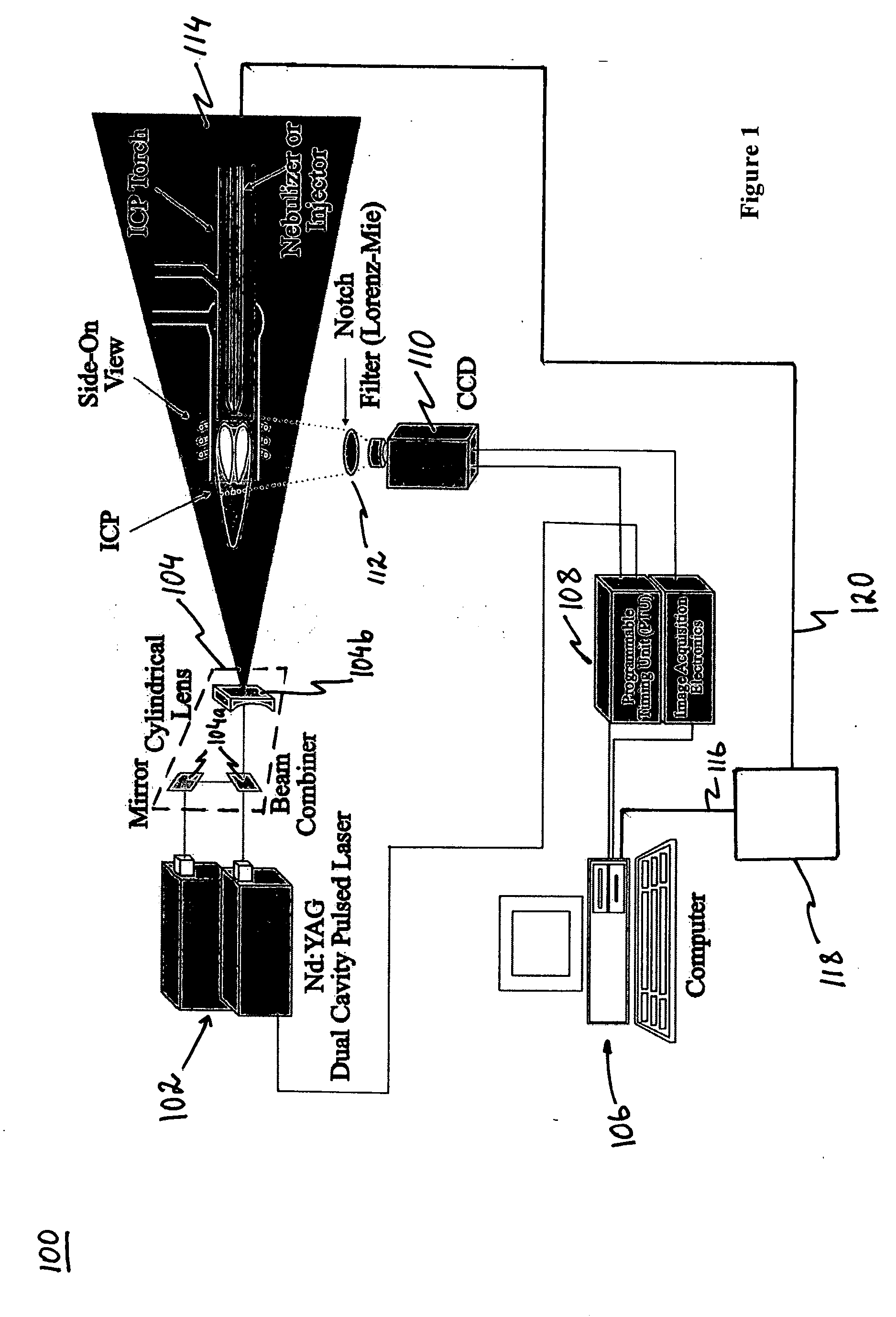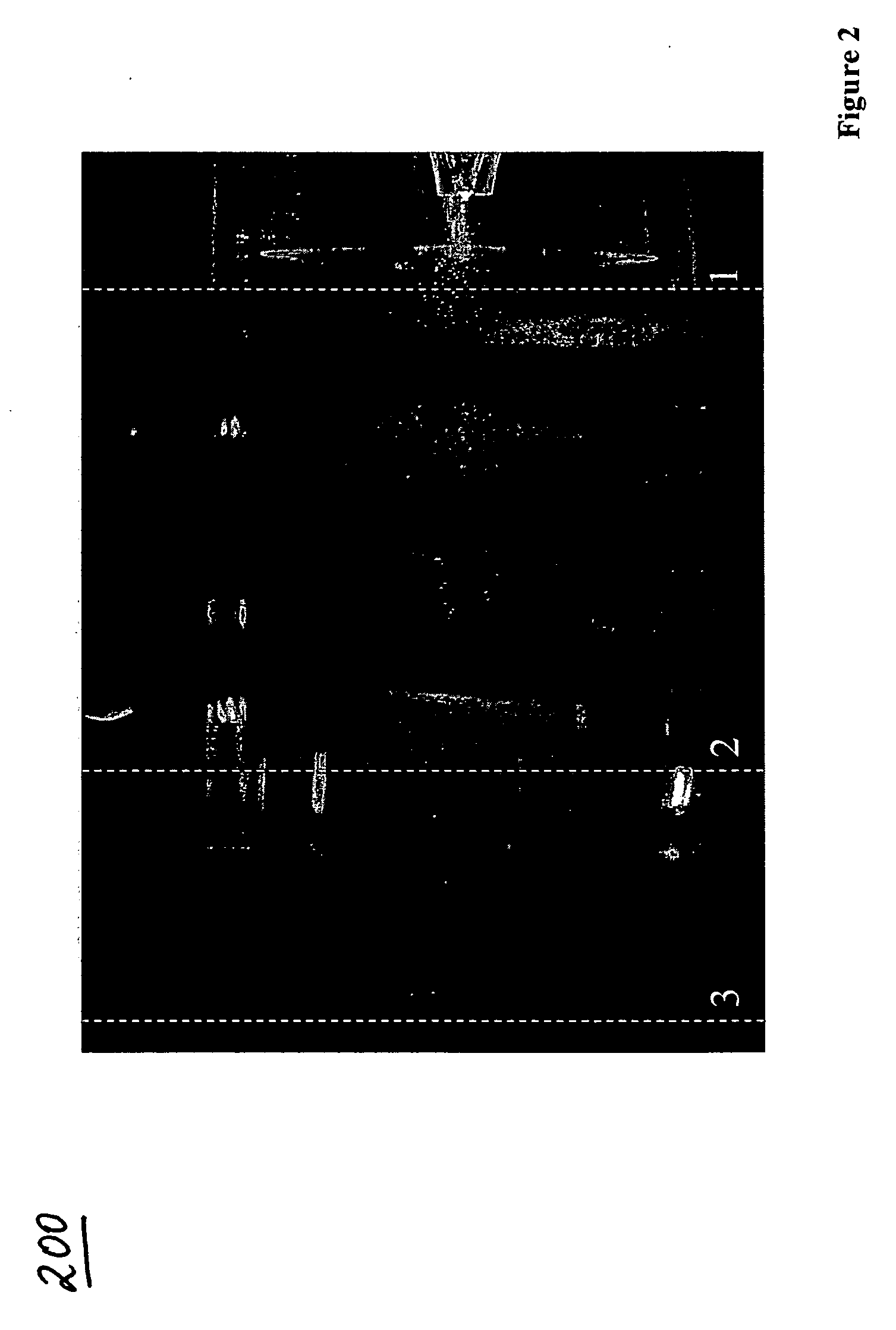In-situ droplet monitoring for self-tuning spectrometers
a droplet monitoring and spectrometer technology, applied in the direction of dispersed particle separation, instruments, separation processes, etc., to achieve the effect of improving the accuracy and precision of analytical measurement, stable analytical signal, and fast droplets
- Summary
- Abstract
- Description
- Claims
- Application Information
AI Technical Summary
Benefits of technology
Problems solved by technology
Method used
Image
Examples
Embodiment Construction
[0029] The concepts and devices presented here can be used to monitor droplets and their characteristics as they undergo desolvation and evaporation in a plasma or a flame source. This information (e.g. droplet number density, droplet size and velocity) can then be used as a feedback signal to optimize the droplet generation and / or source and spectrometer operating parameters to obtain a stable analytical signal. Although in an embodiment of the present invention, the in-situ measurements described below are centered on an inductively coupled plasma source, it should be appreciated by those skilled in the art that the in-situ measurements are equally applicable to other sources.
[0030] To illustrate the potentials of the proposed technique in creating data suitable for tunable spectrometer, the droplet size and velocity information is presented for three diverse nebulization systems. The nebulization systems include: 1) a direct injection high efficiency nebulizer (Model DIHEN-170-A...
PUM
 Login to View More
Login to View More Abstract
Description
Claims
Application Information
 Login to View More
Login to View More - R&D
- Intellectual Property
- Life Sciences
- Materials
- Tech Scout
- Unparalleled Data Quality
- Higher Quality Content
- 60% Fewer Hallucinations
Browse by: Latest US Patents, China's latest patents, Technical Efficacy Thesaurus, Application Domain, Technology Topic, Popular Technical Reports.
© 2025 PatSnap. All rights reserved.Legal|Privacy policy|Modern Slavery Act Transparency Statement|Sitemap|About US| Contact US: help@patsnap.com



